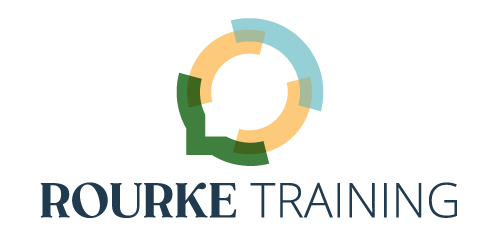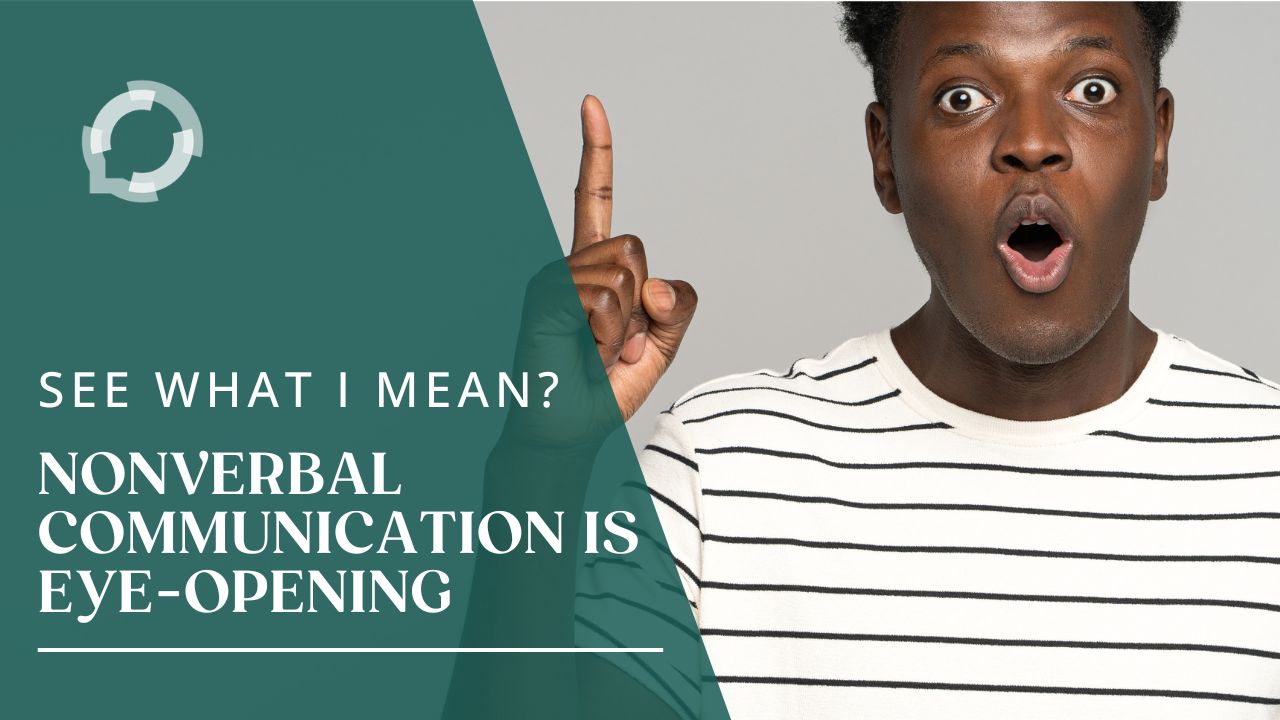To see is to believe.
To see eye to eye.
A picture is worth a thousand words.
Idioms about the importance of eyes, seeing, and vision are everywhere you look in the English language (see what I did there?). Given the importance of sight for humans – and all primates – this makes a lot of sense. This connection between physical ability and language extends from literal sight to metaphorical insight.
To see through rose-colored glasses.
To see the error of your ways.
To see someone/something in a bad light.
To see how the land lies.
To have eyes in the back of your head.
Expressions like these are often so familiar that we don’t really notice their prevalence in language. Have you thought about how seeing applies to your public speaking craft? Here’s a tip for anyone who speaks to audiences, whether formally or informally, in person or online. To be a speaker, presenter, or trainer who puts the audience’s needs first, consider what – and how – people see when you’re onstage or on screen.
Gaze Guidance: They See What You Look At
The term “gaze guidance” means that the speaker in a presentation directs listeners’ attention to specific material by also looking at the material, rather than maintaining direct eye contact with the listeners. Most often studied in the context of education, particularly video recorded instruction, gaze guidance is also relevant to sports coaching, for example.
Researchers in various disciplines within computer science, psychology, and education have been investigating how technology affects learning for quite a while. The increasing role of computers in education lead to a significant number of studies, both before and especially since the pandemic shutdown that began in early 2020, such as this one from 2018 and a recent meta-analysis study from November 2023. The consensus of the evidence shows that where a speaker directs their eyes positively affects audience attention and learning, with relatively few dissensions.
Speakers and trainers who use slides or other visual materials with in-person audiences can adapt this lesson from their counterparts who record their material. Without turning completely away from your audience, angle your body and head towards the information you want them to read as a signal to shift their attention. Likewise, when they see you return to fully facing them, the audience refocuses on you.
Speaker Choreography: Move with your Material
Public speaking is a performance.
Kirsten has talked about how she used speaker choreography in her TEDx. Where she stood, when she moved to a different location, how she moved her arms and hands to physically represent her points – all of those were aspects of her performance that she planned and practiced. She could wing it in the moment because she’d established the blocking in advance.
Choreograph your presentation as a visual guide for your audience. Stand front and center as often as possible, even if you’re projecting material on a screen behind you. If you need to stand aside so your audience can easily see the screen, stand only just to the side, not all the way to the far edge of the space. Consider incorporating blank or minimalist slides into the deck so you can return to center without casting a shadow on information your audience needs.
Move to re-engage your audience’s attention. Cross through the center space of the stage to make a contrasting point. If you’re defining something that’s linear, take a few steps at a time to visually reinforce the idea of process or sequence. Depending on the space you’re in, moving closer to the audience can create a sense of intimacy or of intimidation. Moving away from the audience disengages their immediate attention. Combined with turning partially towards the screen, stepping back from the audience is an effective way to direct them to watch a short video clip. Briefly stepping back is also useful if you’re pausing for a moment so your audience can reflect and gather their thoughts.
Nonverbal Communication: Speaking without Words
Using your eyes to cue your audience’s attention and moving deliberately as you speak are just two aspects of nonverbal communication. Borovac Zakan and Gabrić note that “facial expression, … tone of voice, and touch” are also part of nonverbal communication, as are style of dress and overall appearance. Look for a future blog post on clothing and communication! Their study confirms that “nonverbal communication often leaves a stronger impression on the listener’s attitude towards the speaker than verbal communication.”
Nonverbal communication not only conveys meaning, but it also helps to shape the meaning of what is said. Russuvuori’s study of the interaction between facial expressions and spoken language in everyday storytelling shows that these communication methods work together to solicit an appropriate response from the listener. As the field of public speaking incorporates more storytelling to build trust with audiences, it’s more important than ever to know what your face is saying.
Take care, however, to note that nonverbal communication isn’t inherently systematized or universal. Although popularly referred to as “body language,” gestures and movements are not as readily decoded as spoken language. As Urban Dictionary’s definition of “resting bitch face” attests, one person’s interpretation of another’s facial expression is highly subjective, particularly when the observer is male and the subject is female.
To the contrary, gestures and body movement are contextual. They can vary in meaning according to the race, gender, sex, religion, age, and/or socio-economic status of both the person performing them and viewing the performance, not to mention either party’s mood and emotional state. A listener might smile for reasons that have nothing to do with something the speaker said. They can also convey significantly different meanings across cultures. The global economy has spawned a whole sub-industry in cross-cultural communication and education.
This is why you need to pay attention to all aspects of nonverbal communication throughout your speech or presentation, so everything you say and do works together to convey your meaning. Just be careful. Certain gestures and vocal inflections have become cliché to the point of parody. Comedians parodying TED Talks are hilarious, but you don’t want to be the butt of the joke. As long as what you’re doing is organic to who you are and what you’re saying, you’ll be fine.
How About You?
Have you considered what people see when you’re speaking or presenting? What aspects of nonverbal communication do you pay the most attention to? Have you blocked and practiced movements throughout a speech or watched a recording of your facial expressions when you talk?
On the other hand, what aspects of nonverbal communication do you notice when you’re in the audience? What’s the most effective use of space you’ve seen a speaker use? Have you seen a speaker pace mechanically back and forth? Have you found yourself smiling back when the speaker grins? Leaning forward as the speaker comes closer to the audience?
Tell us about it in the comments. Drop a link if you have video to share, either of yourself or of a speaker who uses nonverbal communication in ways that you admire.
Check Out Our YouTube Channel
The Rourke Training – Ongoing Mastery YouTube channel has a bit of something for everyone. Go there to get Kirsten’s take on examples of public speaking, as well as reflections on her entrepreneurial journey. The channel is also the home of the podcast Kirsten and Kellie produced for 5 years, Ongoing Mastery: Presenting & Speaking, which covers everything connected to continually improving your craft of being a public speaker, from interviews and mini-coaching sessions with guests to conversations between Kirsten and Kellie.
Come join us. Cheers, Kellie


